Did you catch the Hot Stove number? 250! Yikes, that’s asking a lot of reading from you subscribers. And yes, I know Hot Stoves can be obscenely long. But that’s why there is a delete key.
When I hit #200 in September of 2022, I treated it as a milestone, thanking my managing (and only) editor, Rita Leifhelm, and summarizing our history of visits to MLB stadiums. At that time, our bucket list still had eight remaining stadiums. Since that post, we have checked off another three. So, five to go (two in Texas, two in Florida and Seattle). Hope to visit some of those this season.
Speaking of stadiums…
Oh my. The blowout NO vote in the election on April 2. Yes, mistakes were made. WHAT’S NEXT?
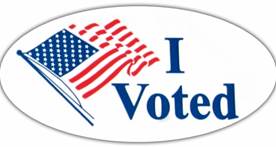
Is a Downtown Stadium Right for Kansas City?: The proposed Crossroads idea is dead. I don’t think anyone wants to revisit that issue. Assuming the leases and other details are worked out well in advance, what about the East Village location that does not disrupt an existing neighborhood? The stadium would be just east of Ilus W. Davis Park (the green area on the left), which connects the Federal courthouse and city hall.

My unsolicited advice to the Royals: Do not pursue that location (or any other downtown) without signoff from Mayor Quinton Lucas and a good portion of the city council. Although the taxing district is Jackson County, the infrastructure, civic planning and incentives for any ballpark district will be city matters. Projects like this need (and deserve) constructive political leadership. If the mayor and council are not enthusiastic advocates for a downtown stadium, no need to pursue.
A hopeful start on that came in a tweet from Mayor Quinton Lucas two days after the election:

As Hot Stove readers know, I like downtown stadiums (“Downtown baseball is cool” – Hot Stove #247). Petula Clark’s “Downtown” is still hanging on as my earworm. A recent Bloomberg piece makes a good case for downtown stadiums (click here). But I’m aware my happiness is not the test for what is right for Kansas City.
In one of David Helling’s articles in the Kansas City Star, he pointed out that “Few people, other than a few aging fanboys, have demanded baseball in the city center.” I doubt Helling has ever seen a Hot Stove post, but he inadvertently described me accurately. I am “aging” (82). I am a “fanboy” for downtown stadiums. And there may only be a “few” of us (but I hope he’s wrong). One word that does not fit is “demanded.” As I said in my earlier Hot Stove, “I’m not trying to change any minds here. Priorities differ. I just want to share why I am voting yes. As a baseball fan.”

If city officials favor a stadium in the downtown loop, the next question is whether the voter district should be Kansas City (including Clay and Platte counties) or Jackson County. The biggest margins of NO votes on April 2 were in eastern Jackson County. Were a lot of those votes against a move downtown to any location? Can the county legislature and County Executive Frank White unify for any proposal? Another political entity question – how much money is expected from the state? Good questions. I have no answers.
If the political will is not there, or if the elected officials believe their constituents won’t approve, so be it. This aging fanboy believes in democracy. The April 2 election was not rigged.
If the politicians are on board, then we can go to…
The Next Campaign: In the first attempt, the voters had a lot to absorb in the short time frame between the announcement of the Crossroads site and election day. It became a reactionary campaign based on the crises of the day.
A new campaign would have a running start with leases and community benefits agreements that may need tweaking but would not be starting from scratch. The Crossroads issue will be absent. Then the conversation can be moved to the synergy that a downtown stadium can bring to the city.
Downtown in Pittsburgh.
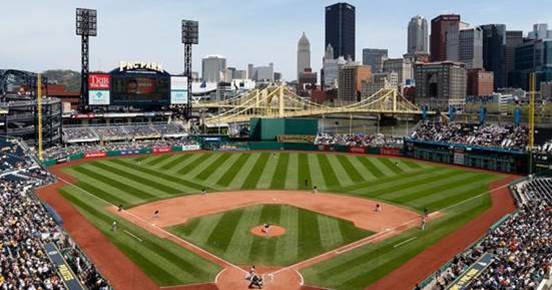
Some issues will remain, but hopefully can be addressed in a manner to satisfy a majority of voters. Let’s look at some of them.
“Save the K”: I understand the feelings of the “Save the K” folks and those who want the K to emulate century-old Wrigley and Fenway. Maybe the K can be preserved to last another 50 years. This would be at a substantial cost, as has been the case with the other two stadiums, but there would be an element of nostalgia, which is part of the beauty of baseball.
Or we can go with a new stadium. Not because of the status of the concrete. But because the K is the oldest in a small market, and it’s time to move to a next-generation stadium. The K is not Fenway or Wrigley, nestled within the street grid in a big-market city and readily accessible by mass transportation. I offer up again the graph from Hot Stove #247. It shows the age of MLB stadiums as of 2016, so the number of years need to be increased by eight (the K is now in its 52nd year). It’s our turn to build a new stadium.
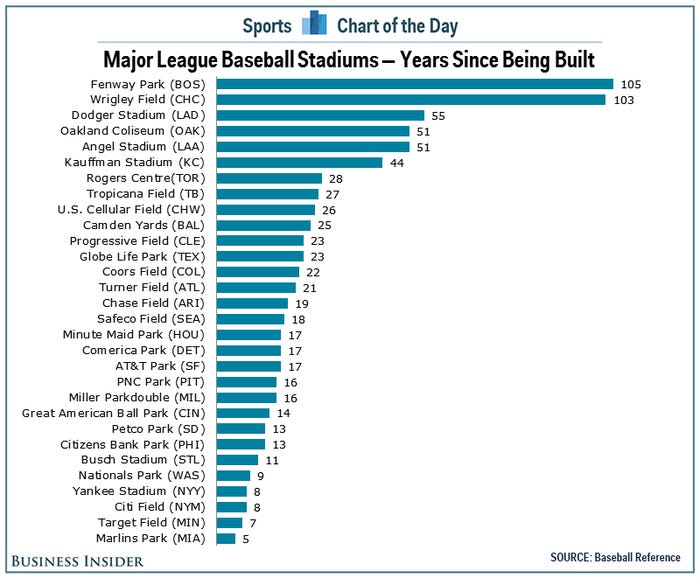
Keeping/Losing the Teams: This became a hot button issue when the teams asked for a YES vote to “keep the Chiefs and Royals in Jackson County.” The implication of this was that a NO vote could result in the teams moving out of the county.
This did not go well as a PR issue. Maybe that message can be softened in the next campaign. What can’t be changed is the reality. That’s always the implication.
There are 30 MLB teams, and other than some rare big-market situations, MLB stadiums receive significant funding from local and state governments. If that financing were not provided, the teams would be in other cities. For better or worse, public/private stadiums are the rule, not the exception.
Downtown in San Diego.
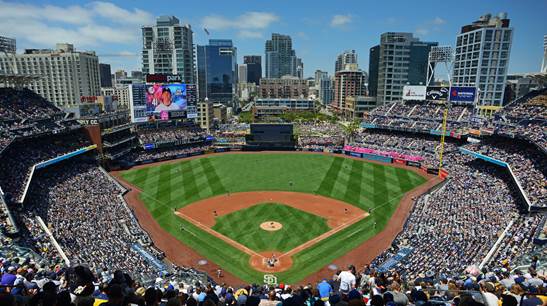
This is not a recent concept. Locally, over a half-century ago (1967), Jackson County voluntarily became a major player in this competition.
Why? Because the county was worried it would lose the A’s and the Chiefs who were both playing at 44-year-old Municipal Stadium at 22nd and Brooklyn. For baseball, they hoped Charlie Finley would agree not to move the A’s, but if he did, they wanted to be positioned for an expansion team. Lamar Hunt had moved the Chiefs from Dallas to KC in 1963 and was willing to play at Municipal on a short-term basis. In 1966, the AFL and NFL merged. The NFL Chiefs were not about to play long term on a field running from home plate to right field.
Political leadership on the issue was taken up by the three administrative judges then running Jackson County government – Charles Curry, Alex Petrovic and Charlie Wheeler. They campaigned for the stadiums, emphasizing the importance of keeping the teams. The proposal won big, and one of the Kansas City Star front-page headlines the morning after the election read…

Also on the front page was this photo. From left, Bill Clarkson and Dutton Brookfield, members of the Jackson County Sports Authority, with Chiefs owner Lamar Hunt. Notably absent was A’s owner Charlie Finley who later that year received permission to move the A’s to Oakland. When the American League expanded in 1969, Ewing Kauffman entered the scene and could look forward to a new stadium to be constructed and paid for by the county.

After 30+ years of pro sports at the Truman Sports Complex, it was time to renovate the two stadiums. The first attempt at funding was in 2004 when five local counties proposed a bi-state solution as had been used for Union Station. But it failed when Jackson County was the only county voting over 50%. Two other counties were needed to move forward, but the vote was less than 50% in all four (Platte, Clay, Johnson and Wyandotte).
The parties went back to the drawing board and decided to move forward in April of 2006 with only Jackson County on the line. The Kauffman Stadium upgrades were set at $250 million, of which the Royals (then owned by David Glass) would contribute $25 million. The voters said YES. The Kansas City Star noted the leadership of the top politicos: “Jackson County Executive Katheryn Shields and Kansas City Mayor Kay Barnes joined themselves at the hip to sell the package.”
When the keep/lose issue heated up for last week’s election, the media that I saw gave the impression that the 2006 election was not marred by any talk of the teams leaving. An example from the Kansas City Star last week: “Owners of the two teams at the time [2006] weren’t sure what would happen next, but leaving the Kansas City metro area apparently wasn’t given strong consideration.” [My emphasis]
I was skeptical. It was important in 1967, why not 2006? I logged into the digital archives of the Kansas City Star at the Kansas City Public Library. I found some interesting quotes.
“The only question is how badly we want to keep our teams…Either the voters of Jackson County agree to pony up, or it could be hasta la vista, baby. Yes, that was a threat the Chiefs issued last week. Boo hoo if you were offended. I wasn’t. Jack Steadman’s not my favorite person, either, but he and Clark Hunt are telling it like it is. If those stadiums are not renovated, we could eventually lose one or both teams.”
That statement was not from the teams. It was from a Star reporter in an article published on March 6, 2006. He was likely following up on an earlier Star article by another reporter who wrote on March 1:
“Jack Steadman, Chiefs vice chairman, told the Kansas City Star…”And if this doesn’t pass, then the Chiefs are going to be looking for a new stadium.” He said the first priority would be the Kansas City area but left open the possibility of the Chiefs moving outside the area. Team president and owner Clark Hunt…said he, too, believes defeating the overhaul would leave the Chiefs wanting a new stadium.”
And this one, on March 30, 2006:
“Elsewhere across the country, voters in recent years have decided to pay what it takes to remain major-league cities. Next Tuesday, so should Jackson Countians…Some critics want to kill Question 1… Truth is, these critics have absolutely no say in whether the Glasses of the Royals or the Hunts of the Chiefs would keep their teams in substandard stadiums with defaulted leases, especially when other suitors exist (especially for the Chiefs).”
The close relative to threatening to leave is the promise to stay a long time. What the Star said after the election in 2006:

“This is an excellent outcome for the entire community, avoiding what otherwise would have been a prolonged period of uncertainty and turmoil over the teams’ future.”
“Thank you, fellow Jackson County voters. You have saved major-league baseball and football for the next 25 years for the entire community.”
In 1967 and 2006, the consequences of not moving forward were an open book. In 2024, even if the teams said nothing, the voters would know. They have known (if they are “aging” like me) since at least 1967.
I believe what the voters want is an improved plan and presentation so they can happily join in for a continuation of a storied private/public partnership.
Downtown in Minneapolis.
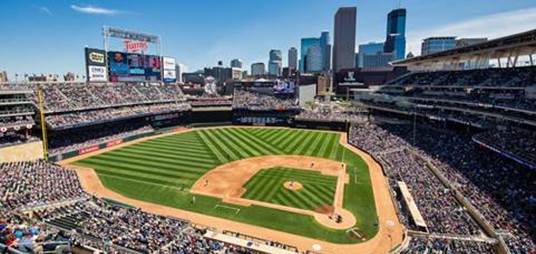
Economic Benefits: With every project like this, there are studies to show the economic benefits of stadiums. Always rosy projections. There may also be some development adjacent to the stadiums, meaning additional jobs, etc.
But for me these are ancillary, not persuasive. I’ll let the Kansas City Star editorial board make my point (from an editorial on April 2, 2006):
“Across the nation and even in many parts of the world, Kansas City is known because of its teams. Locally, the teams knit the community together, across state line and across political divide. How does one calculate the social benefit of a shared interest? Economic studies differ, but for fans in the stands, for those who make Kansas City the tailgating king of football games, and for those who gather around televisions or love to relive games in print, major-league sports are treats that are tough to quantify.”
Amen.
Downtown in Baltimore.
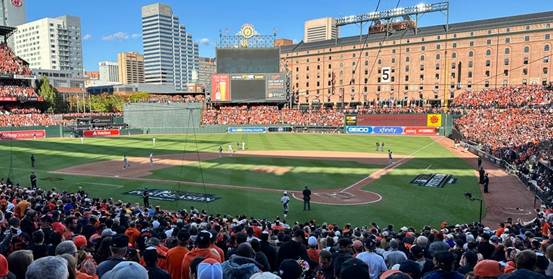
Billionaires: Most pro sports teams are worth at least a billion dollars. So, they are owned by billionaires. I’m glad that the Royals are owned by a local billionaire, John Sherman who, along with other local investors, paid a billion dollars for the Royals in November of 2019, just months before Covid shut down a big part of the 2020 season.
Some have said that billionaire owners should fully fund their stadiums. There should be no public/private partnership. But, as noted earlier, that’s not the reality. If it was, Sherman and his investors would not have paid a billion dollars for the Royals.
The good news is that Sherman bought the team to keep it in Kansas City. He was already a die-hard fan, and his roots are deep in the business, civic and philanthropic worlds of Kansas City. He’s a fanboy of downtown baseball (but not as aging as me). Importantly, not only is Sherman agreeing to bind the current ownership, but the lease will bind any subsequent owner to assure MLB baseball in Kansas City for the next 40 years.
In return, Sherman is asking for a continuation of the public/private partnership that has existed since 1967. That’s not an unfair ask, but it needs to be done with an improved plan and presentation. I hope we can get there.
Downtown in Cleveland (where Sherman was once a part owner of the Guardians).
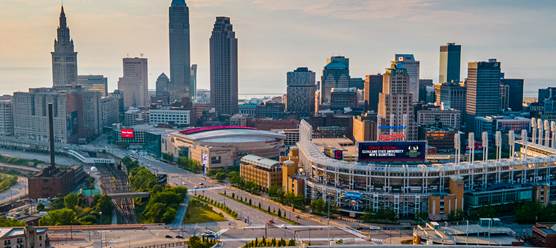
The Other Shoe: What will the Chiefs do? Social media blew up within days after the election with rumors and speculation about a potential move of the Chiefs to Kansas.
Remember the failed 2004 bi-state proposal for the stadiums? The tax split envisioned in that election would be the indirect result if the Chiefs move to Kansas and the Royals end up downtown.
Stay tuned.
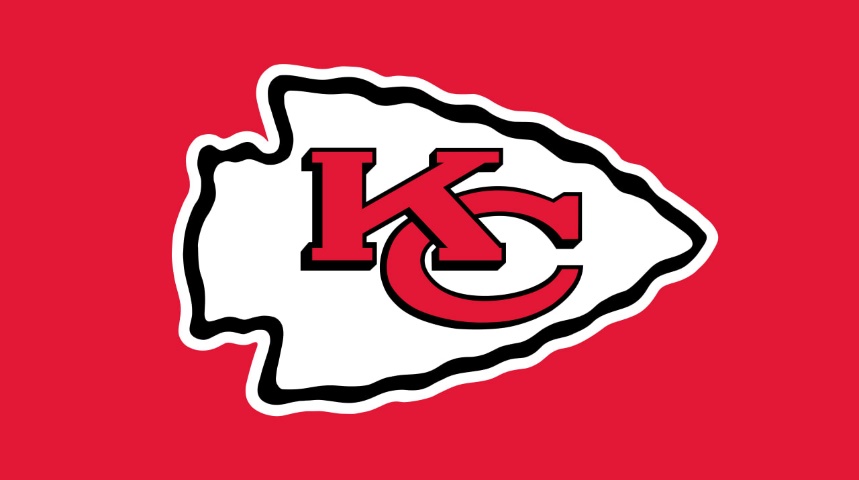
Royals on TV: I’m repeating an item from the last Hot Stove because Tom Grimaldi, one of my Home Run Derby competitors, passed along a clever comment he heard on a radio sports show. “If the Royals should end up moving to Nashville, at least we’ll be able to watch them on TV, which most of us can’t do now.”
The Royals aren’t going to Nashville. But the TV comment is a common refrain. When Google left town, many people cut the cord and lost the Royals cable feed. The easiest way to remedy this is to purchase the Bally streaming service. For the whole season, this costs $105.99.

Many of my friends, strong baseball fans, don’t want to pay that money. Some argue it used to be free (not really, it was factored into their Google bill).
I’m just passing along my perspective. If a couple goes to a game at Kauffman, the cost of tickets, parking and concessions will be over $100. About the price of 162 games on television (65 cents a game). Just sayin’.
And by the way, you will be seeing some exciting baseball. The season is off to a fun start.
Downtown in Denver.
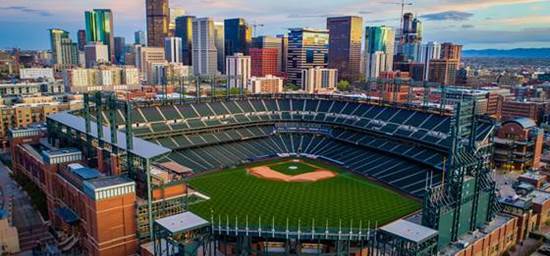
Lonnie’s Jukebox (1) – “Downtown” and Other #1 Hits From 1965: In Hot Stove #248, Lonnie’s Jukebox featured Petula Clark with “Downtown” and several of her other hits. In today’s edition, I’m giving “Downtown” an encore, but the rest of the playlist will be songs that joined “Downtown” as #1 hits in 1965.
The #1 song at the end of 1964 and into the beginning of 1965 was “I Feel Fine” by the Beatles. It was knocked out the #1 slot on January 23 by…
“Downtown” by Petula Clark, the “First Lady of the British Invasion.” My downtown baseball theme song.
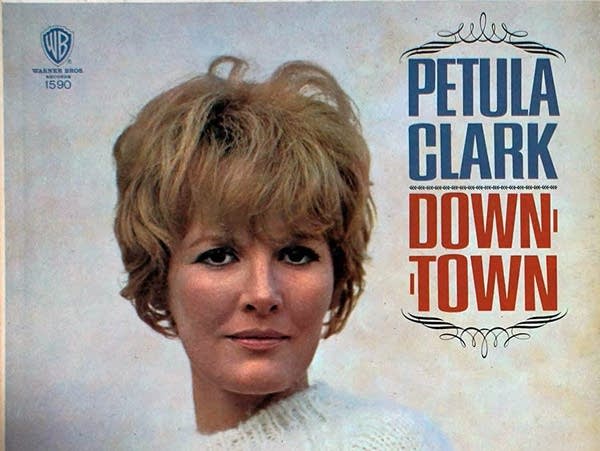
The Beatles hit #1 with four other songs in 1965. “Eight Days a Week,” “Ticket to Ride,” “Help!,” and…
“Yesterday” by the Beatles.
The Byrds two #1 hits were Bob Dylan’s “Mr. Tambourine Man” and…
“Turn! Turn! Turn! (To Everything There is a Season)” by the Byrds.
The Rolling Stones had two at #1. “Get Off of My Cloud” and…
“(I Can’t Get No) Satisfaction” by the Rolling Stones.
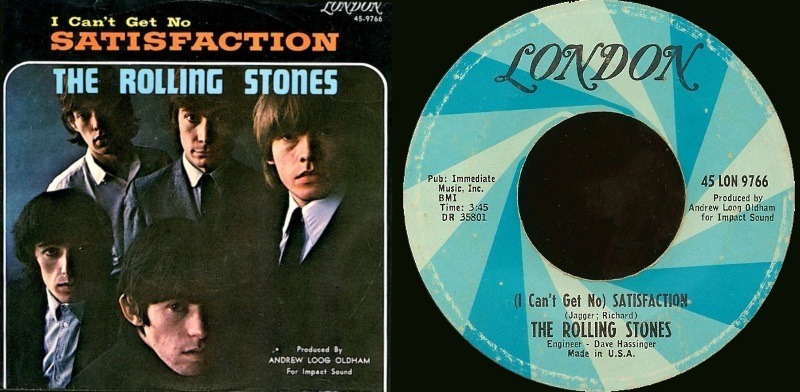
Herman’s Hermits also hit twice. “Mrs. Brown You’ve Got a Lovely Daughter” and…
“I’m Henry VII, I Am” by Herman’s Hermits.
Three favorites from the Motown catalog…
“My Girl” by the Temptations.
“I Can’t Help Myself (Sugar Pie, Honey Bunch)” by the Four Tops.
“I Hear a Symphony” by the Supremes. They also hit #1 in 1965 with “Stop! In the Name of Love.”
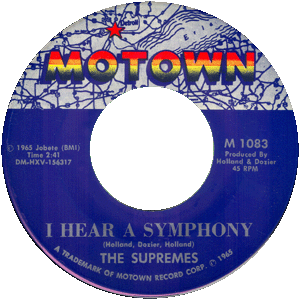
I’ll finish with the 1965 #1 hit Bill Murray woke up to every morning in the movie Groundhog Day…
“I Got You Babe” by Sonny and Cher.
Downtown in San Francisco.
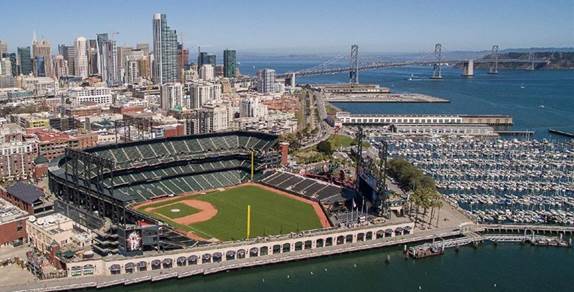
Lonnie’s Jukebox (2) – Larry David Edition: Last night, Rita and I watched the series finale of HBO’s Curb Your Enthusiasm. Larry David, the creator and star of the show, finished with a clever twist on the 1998 finale of Seinfeld, the hit sitcom he co-created with Jerry Seinfeld. I still watch reruns of Seinfeld. This is a thank you to Larry for making me laugh, episode after episode.
“Frolic” – the theme song of Curb Your Enthusiasm.
Lonnie’s Jukebox (3) – Eclipse Edition: Today’s eclipse of the sun will have its maximum level (89%) in Kansas City at 1:54 PM this afternoon. When there is an eclipse, my mind always drifts (like clouds in my coffee) to Carly Simon and the lyrics to her 1972 hit…
“You’re So Vain” by Carly Simon.
Well I hear you went up to Saratoga
And your horse naturally won
Then you flew your Learjet up to Nova Scotia
To see the total eclipse of the sun